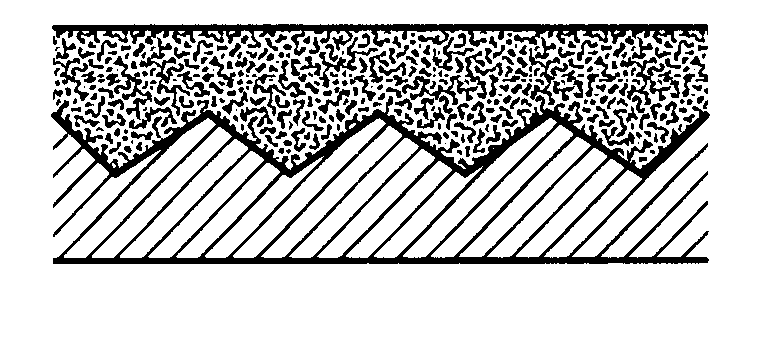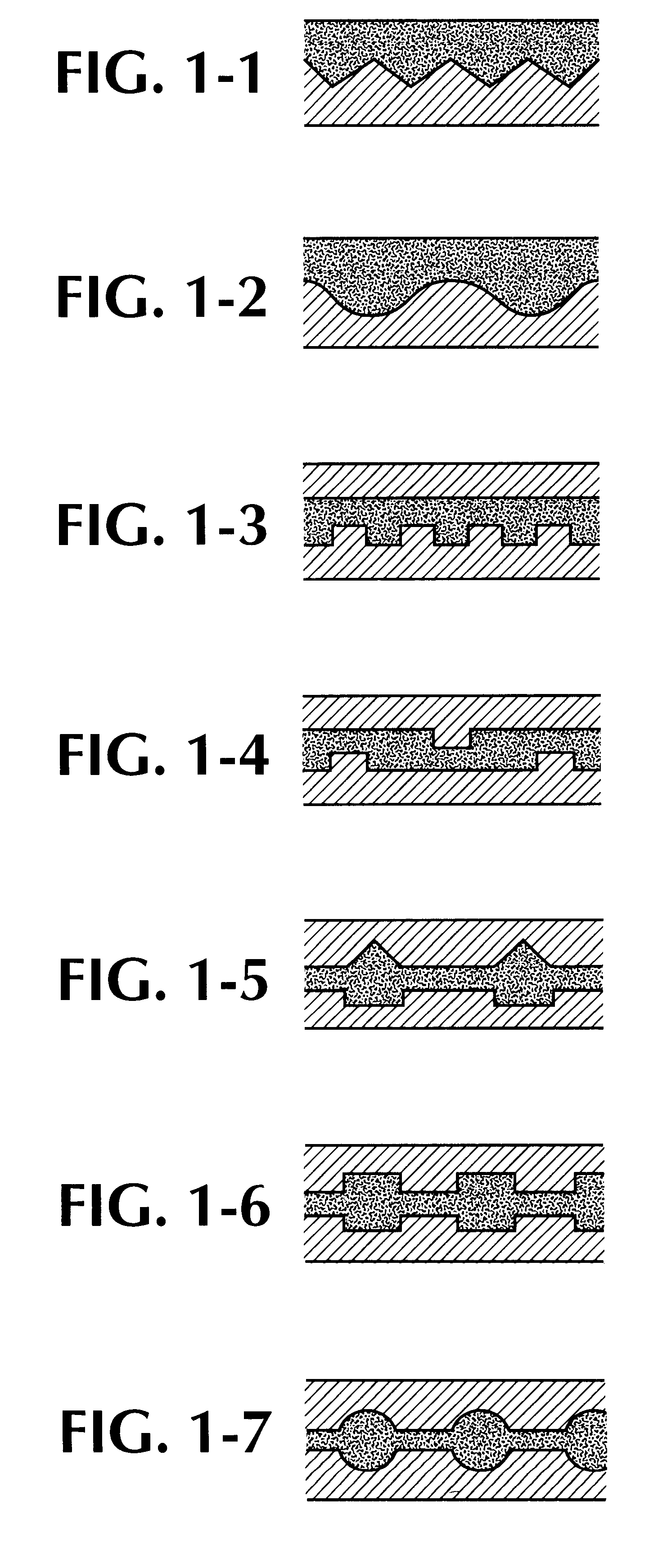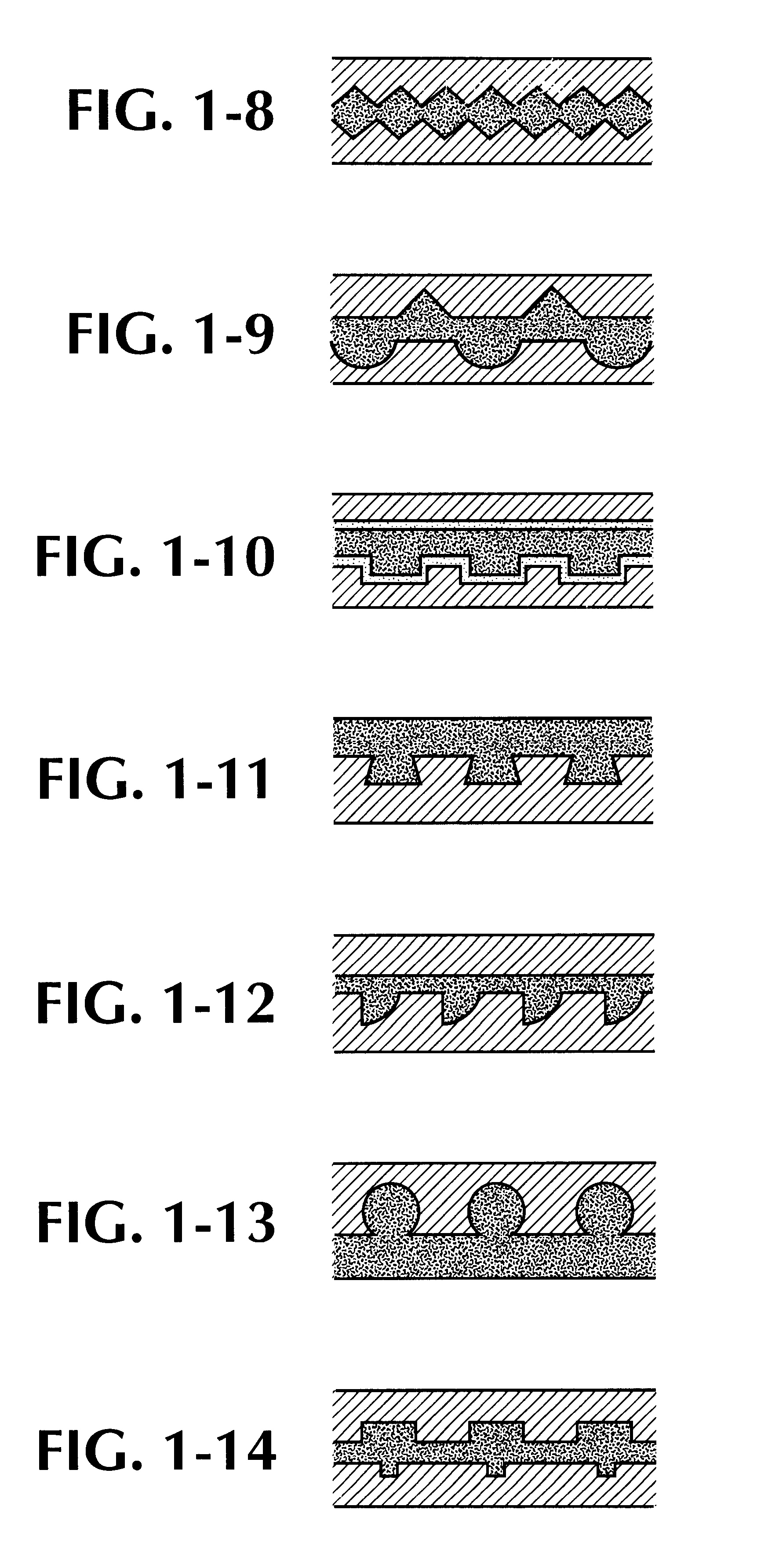Adhesive tape
a technology of adhesive tape and adhesive ring, which is applied in the field of adhesive tape, can solve the problems of tearing and tensile load, disadvantages of a very high price, and inability to prevent tearing at the edges damaged subsequently
- Summary
- Abstract
- Description
- Claims
- Application Information
AI Technical Summary
Problems solved by technology
Method used
Image
Examples
example 1
The film is produced on an extrusion unit in a width of 60 cm using a die as shown in FIG. 2 (three-layer intemal-combining manifold die with exchangeable central plate for generating melt streams with a predetermined profile), a chill roll and a single-stage short-gap drawing unit. The definition of the layers is as follows: Layer 3 lies on the chill roll, layer 1 is the middle layer, layer 2 lies on the air side. The interface between layers 1 and 3 is smooth and that between layers 2 and 1 is intermeshed. The process conditions are as follows:
Raw materials mixture Extruder 1: 50% Shell Polystyrene N 7000 (homopolymer), 50% Stamylan P 83MF10 Block-Copolymer (trivial name: polypropylene)
Raw materials mixture Extruder 2: 5% Shell Polystyrene N 7000 (homopolymer), 95% Stamylan P 83MF10 Block-Copolymer
Raw materials mixture Extruder 3: 75% Stamylan P 83MF10 Block-Copolymer, 25% Stamylex 1026 (LLDPE).
Jaw heating 240.degree. C., chill roll 18.degree. C., film speed prior to drawing 1.5 m...
example 2
Equipment as Example 1. Process conditions:
Raw materials mixture Extruder 1: 50% Shell Polystyrene S 5400 (high impact), 50% Moplen EPQ 30 RF (copolymer-trivial name: polypropylene)
Raw materials mixture Extruder 2: 10% Shell Polystyrene S 5400 (high impact), 90% Moplen EPQ 30 RF
Raw materials mixture Extruder 3: 50% Shell Polystyrene S 5400 (high impact), 50% Moplen EPQ 30 RF.
Jaw heating 240.degree. C., chill roll 18.degree. C., film speed prior to drawing 3.6 m / min, after drawing 24.7 m / min, draw ratio 1:6.7. The profile of the central plate produces a repeating rectangular profile between layers 2 and 1; the amplitude of the rectangles is 0.4 mm and the phase spacing is 2 mm.
The film is corona-pretreated on both sides, coated on the top face with a solvent-free silicone, which is subsequently crosslinked using electron beams. The underside is provided with a primer comprising natural rubber, cyclo rubber and 4,4'-diisocyanatophenylmethane. The adhesive is dissolved in hexane in a c...
example 3
Equipment as Example 1. Process conditions:
Raw materials mixture Extruder 1: 50% Shell Polystyrene S 5400, 50% Moplen EPQ 30 RF
Raw materials mixture Extruder 2: 100% Moplen EPO 30 RF
Raw materials mixture Extruder 3: 100% Moplen EPQ 30 RF
Jaw heating 240.degree. C., chill roll 18.degree. C., film speed prior to drawing 1.5 m / min, after drawing 13.1 m / min, draw ratio 1:8.7. The profile of the central plate produces a repeating profile of semicircles between layers 2 and 1; the radius of the semicirles is 0.2 mm and the phase spacing is 2.4 mm.
The film is corona-pretreated on the underside, coated with an aqueous acrylate pressure-sensitive adhesive (Primal.TM. PS 83 D) and dried at 115.degree. C. in a drying tunnel. The adhesive tape is subsequently wound up to form the stock roll and for further testing is cut (razor cutter) to a width of 15 mm. Bond strength to steel 3.2 N / cm, unwind force at 30 m / min 3.5 N / cm.
PUM
| Property | Measurement | Unit |
|---|---|---|
| Fraction | aaaaa | aaaaa |
| Force | aaaaa | aaaaa |
| Force | aaaaa | aaaaa |
Abstract
Description
Claims
Application Information
 Login to View More
Login to View More - R&D
- Intellectual Property
- Life Sciences
- Materials
- Tech Scout
- Unparalleled Data Quality
- Higher Quality Content
- 60% Fewer Hallucinations
Browse by: Latest US Patents, China's latest patents, Technical Efficacy Thesaurus, Application Domain, Technology Topic, Popular Technical Reports.
© 2025 PatSnap. All rights reserved.Legal|Privacy policy|Modern Slavery Act Transparency Statement|Sitemap|About US| Contact US: help@patsnap.com



